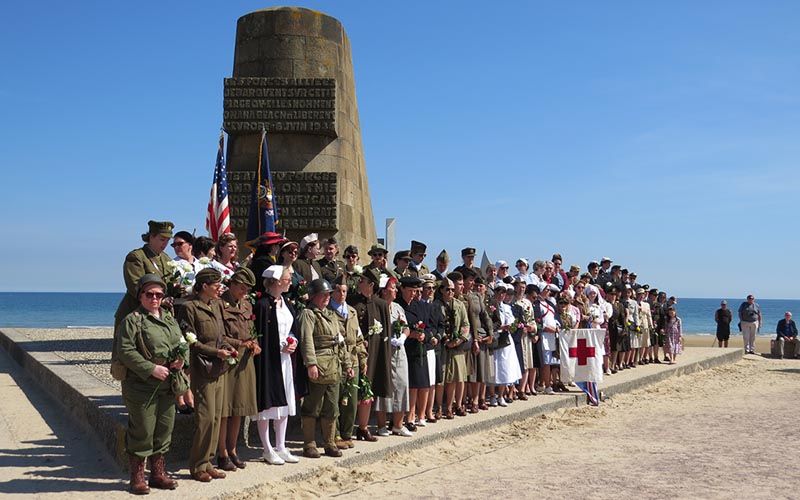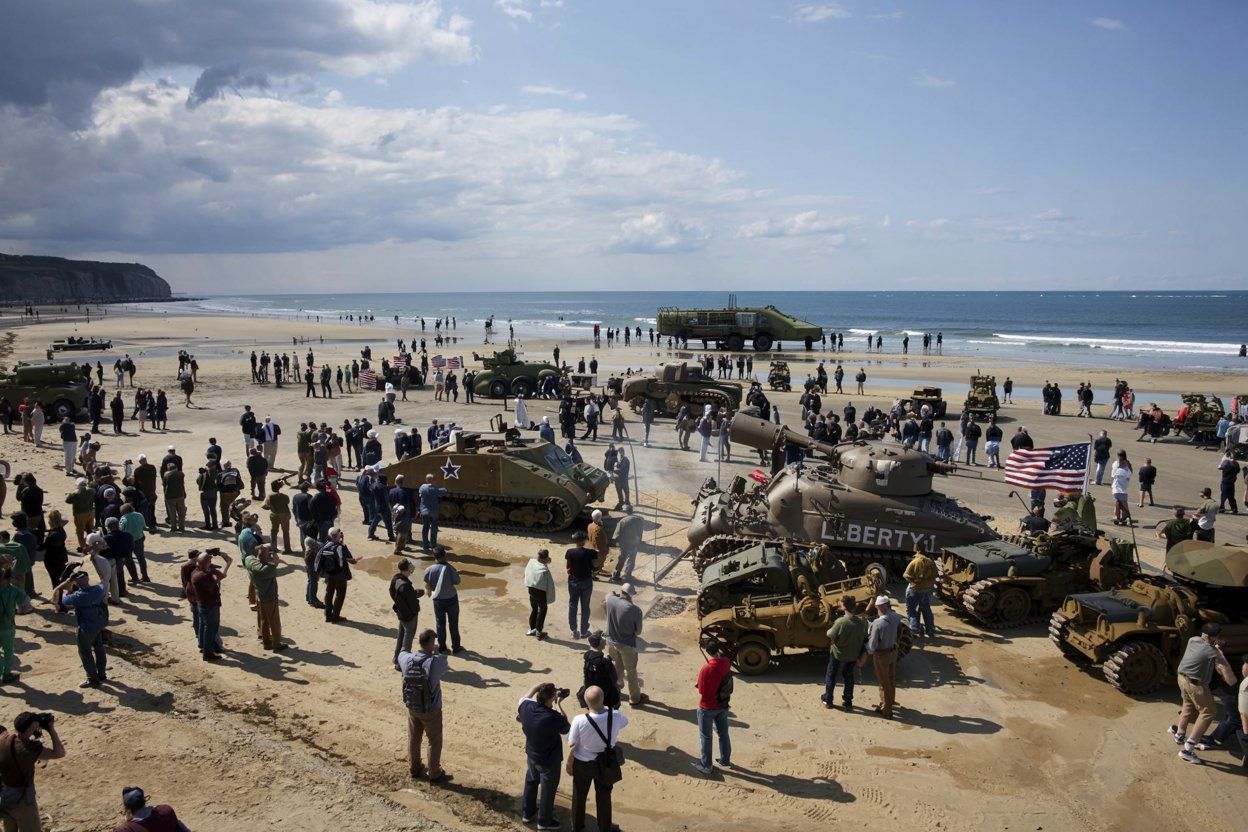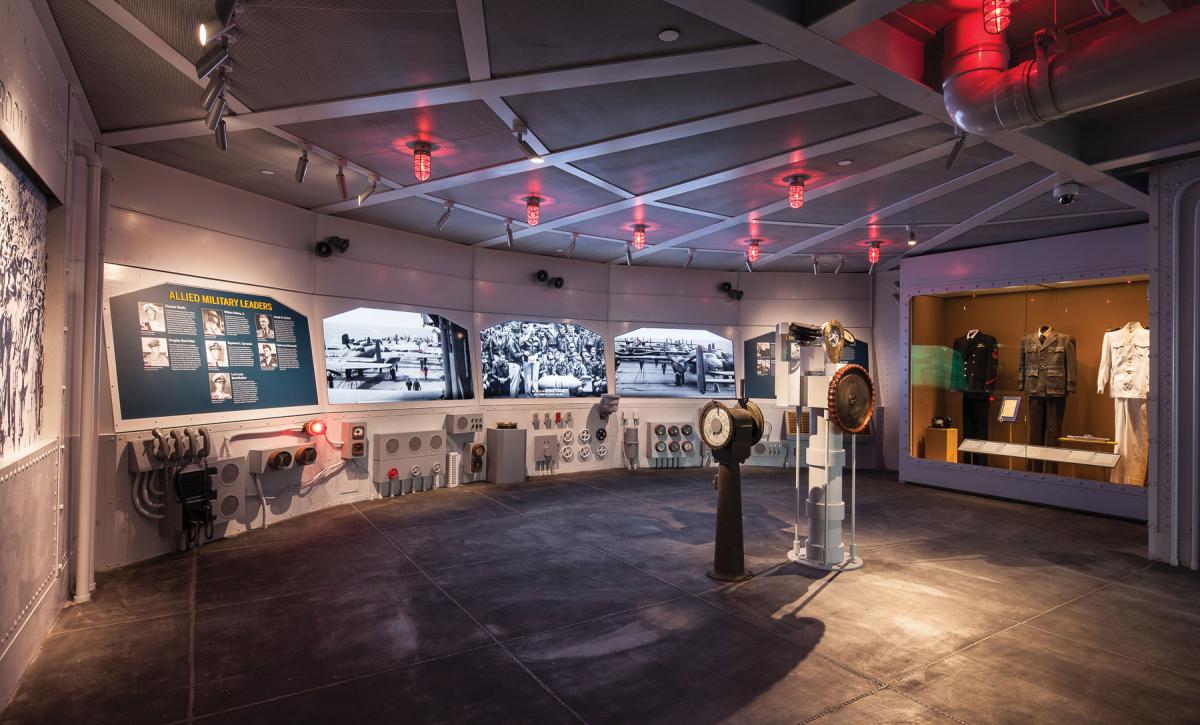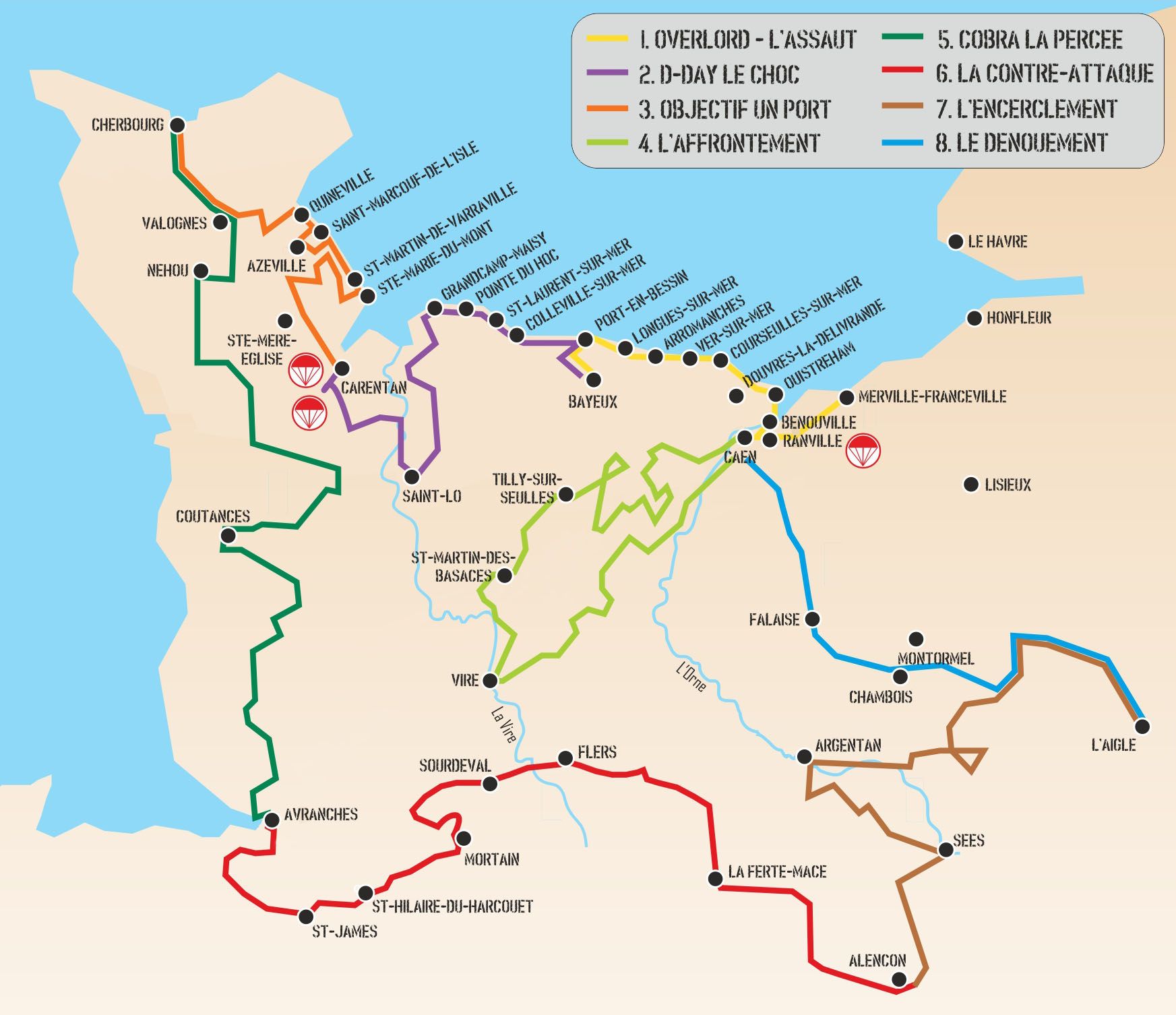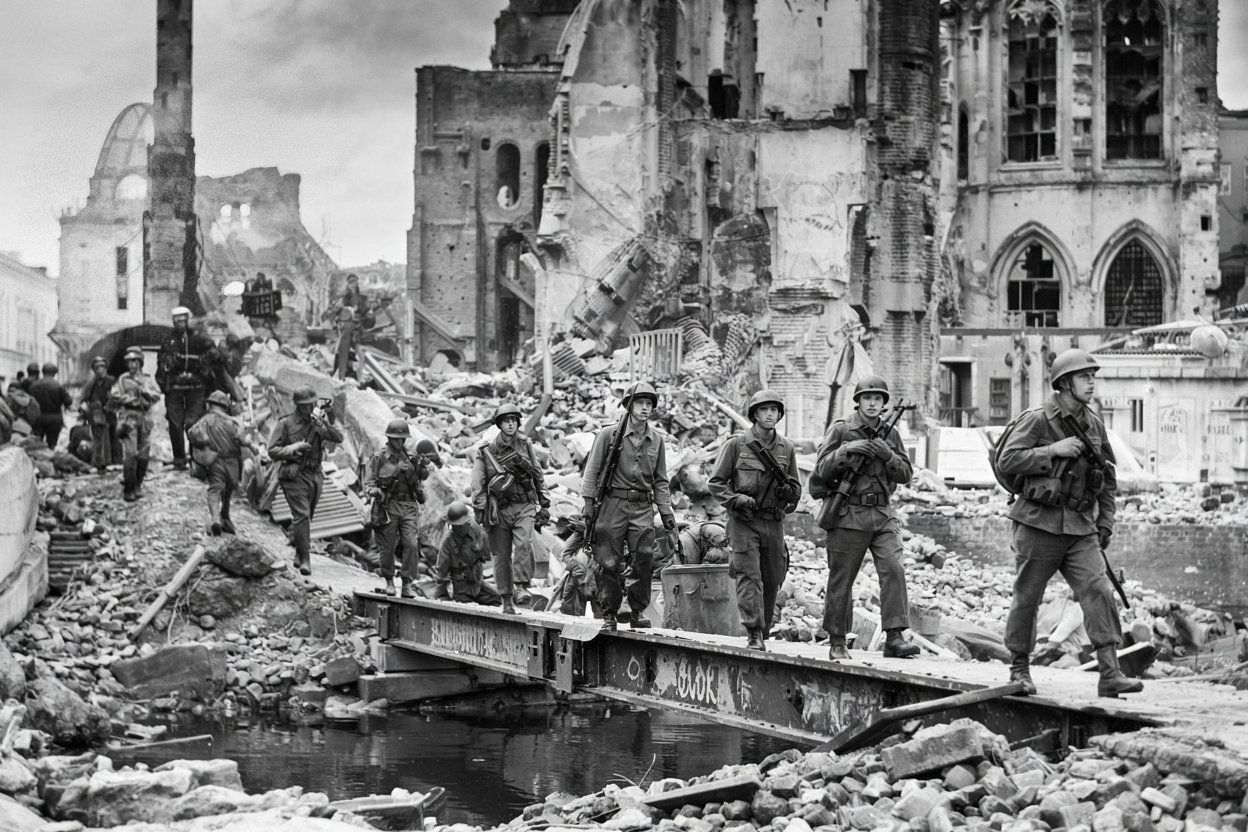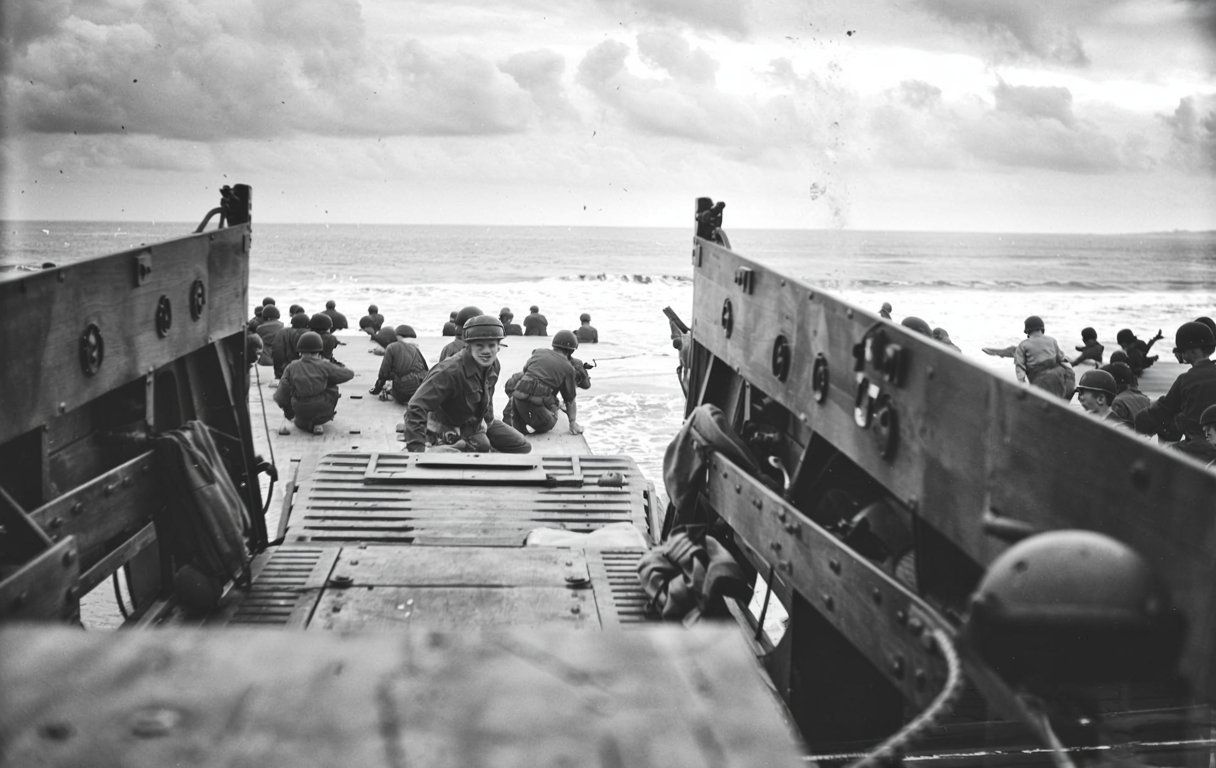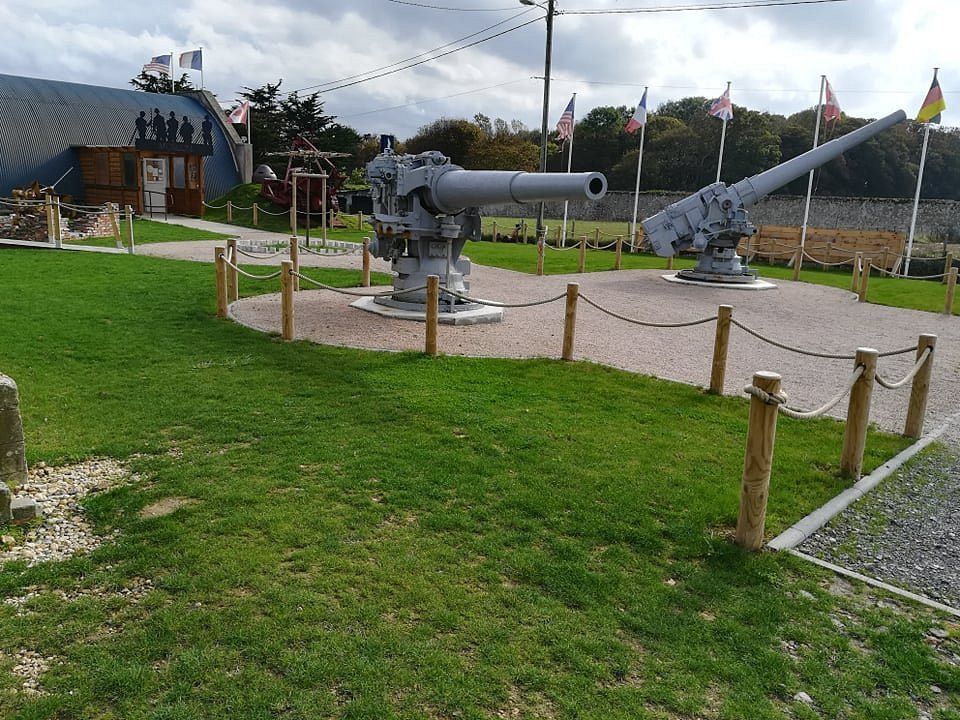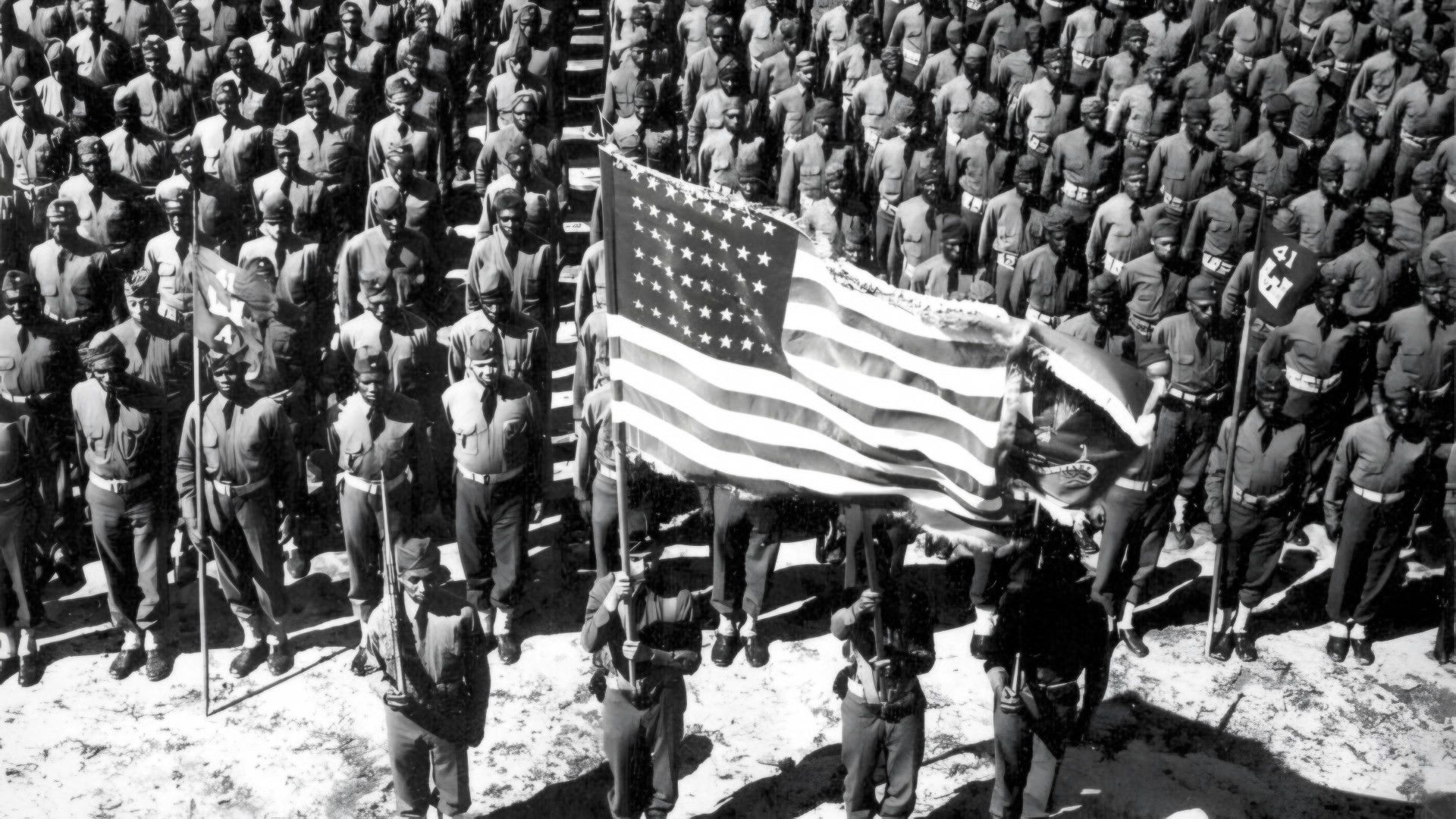During World War II, the leaders of Britain, the United States, and the Soviet Union met at three major wartime conferences. They gathered at Tehran, Yalta, and Potsdam, and their decisions changed the course of history. Churchill, Roosevelt, Stalin, Truman, and Attlee decided how the war would end and what Europe would look like afterward.
The Tehran, Yalta, and Potsdam conferences laid the groundwork for the post-war world, splitting Europe into zones of influence that stuck around for decades. Each meeting had its own focus. At Tehran, they concentrated on military strategy and opening a second front against Germany. At Yalta, the talks shifted to reorganizing Europe as victory came closer. Potsdam focused on the nuts and bolts after Germany surrendered.
These conferences show how the Allies worked together, even though their political systems and interests often clashed. The meetings highlight the shift from wartime teamwork to the tensions that would lead to the Cold War. If you want to understand how the world changed after 1945, these negotiations are key.
Overview of the Allied Conferences
The three big Allied conferences during World War II brought together the United States, Britain, and the Soviet Union. They coordinated military strategy and mapped out the post-war world.
These meetings set up the plan for beating Nazi Germany and dividing post-war Europe.
Purpose and Historical Context
The Allies started holding these conferences out of military necessity. Once Germany invaded Russia in 1941, Stalin needed help from the West.
Even though their politics were worlds apart, the United States, Britain, and the Soviet Union formed a partnership. The threat from Nazi Germany forced them to work together.
Early conferences zeroed in on military strategy and opening a second front in Europe. Later on, the focus turned to occupying Germany and drawing up new borders.
The summits also tried to keep the Allies on the same page. Regular talks helped avoid misunderstandings and kept military operations coordinated.
As the war went on, these conferences grew more important. By 1945, victory felt inevitable, and post-war planning shot to the top of everyone’s list.
The Big Three: Key Leaders
The Big Three—three world leaders who shaped World War II—each brought their own perspective and national interests.
Winston Churchill showed up for Britain at all three conferences. As Prime Minister, he brought a lot of political know-how. Churchill often played the mediator between the Americans and Soviets.
Franklin Roosevelt led the US at Tehran and Yalta. He died in April 1945, not long before Germany surrendered. Harry Truman took over for Roosevelt at Potsdam.
Joseph Stalin represented the Soviet Union every time. As the boss of a communist superpower, he clashed with his Western counterparts over how to handle the post-war world. Stalin’s victories on the Eastern Front gave him a lot of bargaining power.
The relationships among these leaders shaped the results of each conference. Roosevelt and Churchill stayed close, while Stalin always kept his distance.
Chronology and Codenames
The three conferences stretched over nearly two years, each with its own codename and goals.
The Tehran Conference ran from November 28 to December 1, 1943. They called it Eureka. The Big Three met at the Soviet embassy in Iran and set a firm date for opening the second front: May 1944.
The Yalta Conference took place from February 4 to February 11, 1945. Codenamed Argonaut, this meeting happened as Allied victory felt almost certain. The leaders talked about occupying Germany and the Soviets joining the Pacific war.
The Potsdam Conference went from July 17 to August 2, 1945. They called it Terminal. By then, Germany had already surrendered on May 8, 1945. The focus turned to carrying out earlier agreements and dealing with the war against Japan.
Each conference mirrored the changing military situation and the growing tensions among the Allies as victory approached.
Tehran Conference: Decisions and Impact
The Tehran Conference set the stage for how the war would end. Stalin, Roosevelt, and Churchill agreed to open a second front in Western Europe and started shaping post-war borders in the Middle East and Europe.
Strategic Military Agreements
At Tehran, the Big Three made a crucial decision—they agreed to coordinate attacks on Nazi Germany. Stalin promised to launch a big offensive on the Eastern Front to line up with the Western invasion.
Roosevelt and Churchill nailed down the timing for invading Western Europe. They chose May 1944 for Operation Overlord.
Stalin also said he’d enter the war against Japan after Germany surrendered. That gave the US and Britain some reassurance about not fighting Japan alone.
They talked about how to sync up their armies’ attacks. Their goal was to stop Germany from shifting troops between fronts.
For the first time, all three Allies committed to specific dates and plans. This coordination proved critical to beating Germany in 1945.
Debate Over the Second Front
Stalin had pushed for a second front in Western Europe since 1941. The Soviets were carrying the brunt of the fight against Germany.
Churchill wanted to attack Germany through the Mediterranean and Balkans. He figured that would cost fewer British lives than storming France.
Roosevelt backed a cross-channel invasion but hesitated because his military advisors worried about timing. The US was still building up its forces in Britain for the operation.
Each country had its own reasons. Stalin needed relief for Soviet troops. Churchill wanted to keep British losses down and protect Mediterranean interests.
At Tehran, they finally agreed—a cross-channel invasion was the quickest way to defeat Germany. This ended months of tense debate.
Operation Overlord and D-Day
The Tehran Conference locked in Operation Overlord’s target: the beaches of Northern France. Allied forces had been planning the invasion for months.
Churchill and Roosevelt told Stalin they’d put their best commanders on the job. They promised to throw their full weight behind the invasion.
The second front would pull German divisions away from the East, helping the Soviets advance.
Stalin said he’d time Soviet offensives with the D-Day landings. That would keep Germany from reinforcing either front effectively.
The Tehran agreement made D-Day a done deal. Without Stalin’s pledge, Roosevelt and Churchill might have hesitated or delayed.
Territorial Discussions and Iran
The leaders also talked about Iran’s future. Since 1941, the Allies had occupied Iran to keep supply routes open.
Stalin wanted the Soviets to have access to warm-water ports via Iran. Roosevelt and Churchill agreed to talk about post-war plans that would respect Iranian independence.
They signed the Declaration of Iran, promising to respect Iran’s sovereignty and pull out their troops after the war.
They also discussed Poland’s borders and Eastern Europe. Stalin wanted recognition for the Soviet gains from the 1939 invasion of Poland.
These talks set the stage for later negotiations. The deals struck at Tehran would echo at Yalta and Potsdam.
Yalta Conference: Outcomes and Controversies
The Yalta Conference led to big decisions about Europe’s future and created lasting tensions. Roosevelt, Churchill, and Stalin decided on Poland’s borders, Soviet influence in Eastern Europe, and the creation of the United Nations—choices that shaped the Cold War.
Postwar Reorganization of Europe
The three leaders agreed to split Germany into occupation zones after surrender. Each major power would control a region.
Germany’s Division:
- American Zone: Southern Germany
- British Zone: Northwestern Germany
- Soviet Zone: Eastern Germany
- French Zone: Added later from American and British areas
They planned to root out Nazi influence from German society. This denazification would remove Nazis from power.
War criminals would go on trial for their actions. The Allies wanted justice for those responsible for atrocities.
Germany had to pay reparations for war damages. The Soviets demanded the biggest share because of their heavy losses.
These choices split Germany for decades. East and West Germany stayed divided until 1990.
Soviet Influence in Eastern Europe
Stalin walked away from Yalta with major control over Eastern Europe. Roosevelt and Churchill accepted this in exchange for Stalin’s promise of free elections.
The Declaration on Liberated Europe said liberated countries could pick their own governments. Stalin, though, saw this differently than his Western partners.
By February 1945, Soviet forces already occupied most Eastern European countries. That gave Stalin real control, whatever the agreements said.
Countries under Soviet influence included:
- Poland
- Czechoslovakia
- Hungary
- Romania
- Bulgaria
Stalin promised democratic elections. After the war, he broke that promise and installed communist governments.
This betrayal fueled tensions between the Soviets and the West. Many historians see this as the Cold War’s starting line.
Formation of the United Nations
Yalta finalized the United Nations. The leaders agreed on voting rules and the organization’s structure.
Stalin tried to get all 16 Soviet republics into the UN. Roosevelt and Churchill talked him down to just three seats: the Soviet Union, Ukraine, and Belarus.
The Security Council would have five permanent members, each with veto power:
- United States
- Soviet Union
- Britain
- France
- China
Any permanent member could block actions they didn’t like. This protected national interests but also limited what the UN could do.
They hoped the United Nations would do better than the failed League of Nations. The idea was to prevent future world wars through cooperation.
Stalin agreed to join the war against Japan within three months after Germany’s defeat. In exchange, the Soviets would get back territory lost in the 1904-1905 Russo-Japanese War.
Agreements on Poland
Poland sparked the most heated debates at Yalta. Borders and government structure divided the Allies.
Border Changes:
- Poland lost land in the east to the Soviets
- Poland gained land in the west from Germany
- Millions of people had to move
Stalin wanted a pro-Soviet government in Warsaw. Roosevelt and Churchill favored the Polish government-in-exile, based in London.
They agreed to reorganize the communist government in Poland, adding democratic leaders from other groups.
Free elections would decide Poland’s government. Stalin said he’d hold them “as soon as possible.”
The Lublin Committee, backed by Moscow, ran Poland during the war’s final months. That gave pro-Soviet forces a big edge over the democratic opposition.
Stalin never delivered on his free elections promise. The communist government stayed in power until 1989.
Roosevelt caught flak for giving in to Stalin on Poland. Many Americans with Polish roots felt let down.
The outcome on Poland at Yalta showed just how limited Western influence was in Eastern Europe. In the end, military occupation counted more than diplomatic promises.
Potsdam Conference: Final Negotiations
The Potsdam Conference ran from July 17 to August 2, 1945, near Berlin, after Germany’s surrender. New faces replaced Roosevelt and Churchill, while Stalin stayed the same, changing the dynamic for the last big talks about Germany and the ongoing war with Japan.
Changes in Leadership
Potsdam brought big leadership shake-ups for the Allies. President Harry Truman stepped in for the United States after Roosevelt died in April 1945.
Truman didn’t have much experience in international diplomacy. He hadn’t built up the personal relationships that Roosevelt had with Stalin and Churchill.
Britain’s leadership changed right in the middle of the conference. Churchill started the meeting but lost the 1945 election halfway through.
Clement Attlee took over and came back to Potsdam as the new Prime Minister. That created some confusion, since Attlee needed time to get up to speed.
Only Stalin stuck around from the original Big Three. That gave the Soviet Union an edge, since Stalin remembered all the previous deals.
The Potsdam Agreement
At Potsdam, the Allies sorted out Germany’s immediate future after the Nazis fell. They split Germany into four occupation zones run by the US, Britain, France, and the Soviet Union.
Key points included:
- Disarming all German military forces
- Removing Nazis from government
- Democratic reforms in politics and education
- Limits on German industry to stop future rearmament
They moved Germany’s borders west. Poland got German territory in the east, while Germany lost land to both Poland and the Soviets.
Population transfers became a huge issue. Millions of Germans living in Poland and Czechoslovakia were forced to relocate to Germany’s new borders.
Reparations set off arguments among the Allies. The Soviets wanted heavy payments, but the Western powers wanted Germany to bounce back economically.
The Potsdam Declaration and Japan
The Potsdam Declaration called for Japan to surrender immediately in the Pacific war. On July 26, 1945, the US, Britain, and China signed the declaration.
They offered Japan clear terms. The Allies demanded that Japanese military forces disarm completely, and they required democratic reforms to replace the old government system.
The declaration warned of consequences:
- “Prompt and utter destruction” if Japan refused to surrender
- Allied forces would occupy Japanese territory
- Military leaders would face war crimes trials
Japan turned down these terms at first. Emperor Hirohito and his top military leaders thought they could keep fighting and maybe get better conditions.
But the US dropped atomic bombs on Hiroshima and Nagasaki in August, and that changed everything. The Soviet Union also declared war on Japan, just as they had planned at the conference.
Japan finally accepted the Potsdam Declaration on August 15, 1945. Emperor Hirohito went on the radio and told the Japanese people that the country would surrender.
Seeds of the Cold War
At Potsdam, disagreements between former allies started to come out into the open. Stalin and Truman argued about Eastern Europe’s future and how much influence the Soviets would keep in the regions they occupied.
Poland became a flashpoint. The Soviets put a communist government in place, even though they had promised democratic elections at earlier meetings.
Truman pushed back harder against Soviet expansion than Roosevelt ever had. He thought Stalin was ignoring wartime promises about free elections in liberated countries.
The nuclear bomb changed the balance of power during these talks. Truman told Stalin about the new weapon, though Stalin already knew about it through his spies.
Economic issues made things even messier. The Soviets wanted to keep Germany weak forever, but the Western powers needed German industry for European recovery.
These disagreements at Potsdam basically kicked off the Cold War. The teamwork that had beaten Nazi Germany just couldn’t survive these new political differences.
Shaping the Postwar World
The three Allied conferences laid the groundwork for postwar international relations with territorial divisions, new diplomatic structures, and tensions between rising superpowers. These choices set up zones of influence that would shape global politics for decades.
Division of Germany and Europe
The Allies split Germany into four occupation zones. The United States, Soviet Union, Britain, and France each took control of a different part.
Through these deals, the Soviets took over Eastern Europe. Poland’s borders moved west, which gave the Soviets even more control in the region.
Key Territorial Changes:
- Germany split into occupation zones
- Poland’s eastern territory went to the Soviet Union
- German populations relocated from Eastern European countries
- Soviet influence spread across Eastern Europe
The Yalta Conference made the most controversial territorial decisions. Stalin secured Soviet control over places like Poland, Hungary, and Romania.
These divisions led to long-term tensions. Later, the Western Allies saw many of the Eastern European arrangements as Soviet expansion, not just security moves.
Rise of International Cooperation
The conferences set the stage for the United Nations. Leaders figured out voting rules and how the Security Council would work.
At the Tehran Conference, Roosevelt, Churchill, and Stalin started talking about a new international peacekeeping body to replace the failed League of Nations.
By Yalta, they had more details about how the UN would function. The five permanent Security Council members would be the United States, Soviet Union, Britain, France, and China.
UN Foundation Elements:
- Security Council with veto powers
- General Assembly representation
- International peacekeeping mandate
- War crimes prosecution framework
The Potsdam Declaration showed early UN-style teamwork. The US and Britain issued joint demands for Japan’s surrender, which was a sign of coordinated international pressure.
Transition to the Cold War Era
During the conferences, tensions between the US and the Soviet Union became obvious. Competing ideas about postwar Europe led to deep disagreements.
Stalin broke agreements made at Yalta by setting up communist governments in Eastern Europe, despite promises of free elections.
At Potsdam, President Truman took a much tougher approach than Roosevelt. This marked the start of a more confrontational US-Soviet relationship.
The atomic bomb, developed during Potsdam, changed the dynamics. The US’s nuclear power shifted negotiations with the Soviets over Asia and Europe.
Early Cold War Indicators:
- Disagreements over Eastern European governments
- Nuclear weapons as diplomatic leverage
- Competing ideologies about governance
- Economic reconstruction disputes
These conferences set up the framework for Cold War rivalry. The wartime cooperation between the Allies just couldn’t survive their clashing postwar goals.
Legacy of the Allied Conferences
The Tehran, Yalta, and Potsdam conferences changed how nations handle diplomacy and shaped world politics for decades. These wartime meetings brought new ways of international cooperation and created political divisions that defined the postwar era.
Influence on Global Diplomacy
The three Allied conferences totally changed how world leaders meet and make decisions. Before that, most diplomacy happened through letters or lower-level officials.
The conferences proved that direct meetings between heads of state could solve tough problems fast. This became the norm for major international talks.
Key diplomatic changes included:
- Regular summit meetings between world leaders
- Multi-party negotiations on global issues
- Public statements after major conferences
- Detailed planning sessions before meetings
The Atlantic Charter principles, discussed at these conferences, became a model for future international agreements. Its ideas about self-determination and human rights influenced later treaties.
The conferences also showed that personal relationships between leaders could really affect outcomes. Roosevelt, Churchill, and Stalin’s face-to-face meetings built trust that helped them win the war.
Modern summits like the G7 and G20 still follow the patterns set by these wartime conferences. Leaders still use private discussions, then make public announcements.
Long-Term Political Consequences
The decisions made at Tehran, Yalta, and Potsdam split Europe for almost 50 years. The agreements about occupation zones in Germany laid the groundwork for the Cold War.
Major political outcomes:
| Conference | Key Decision | Long-term Impact |
|---|---|---|
| Tehran | Second front in Europe | Weakened Germany’s position |
| Yalta | Polish borders and government | Soviet control of Eastern Europe |
| Potsdam | German occupation zones | Division into East and West Germany |
The conferences led straight to the founding of the United Nations. The three leaders agreed on the basic structure and voting rules that the UN still uses.
After the war, Stalin broke his promises about free elections in Eastern Europe. This led to decades of tension between the Soviet Union and the West.
The atomic bomb dropped on Japan, announced at Potsdam, changed international relations forever. Nuclear weapons became a major factor in every diplomatic conversation after that.
Germany stayed divided until 1989 because of choices made at these conferences. The occupation zones eventually turned into permanent borders between democratic and communist systems.
Lessons for Future International Summits
Wartime conferences really hammered home some big lessons about international negotiations. When countries put clear agreements in writing, they can sidestep a lot of future arguments.
Personal diplomacy can actually work well, but only if you back it up with solid preparation. Each meeting had its own agenda, and professional staff always supported the process.
Important lessons learned:
- Always bring interpreters and take detailed notes to cut down on misunderstandings.
- Set deadlines for reaching agreements.
- Add enforcement mechanisms to any treaties.
- Prepare for leadership changes while negotiations are still happening.
The Potsdam conference made it obvious that new leaders can totally change how negotiations play out. When Truman took over for Roosevelt and Attlee stepped in for Churchill, the whole vibe of the meeting turned much more confrontational.
People organizing future summits realized they should keep meetings shorter and more to the point. Potsdam dragged on for more than two weeks but actually achieved less than the much shorter Tehran meeting.
These conferences also highlighted how crucial it is to include smaller nations in the big decisions. Ignoring countries affected by the agreements led to a bunch of problems after the war.
Modern international summits still stick to a lot of the habits set at Tehran, Yalta, and Potsdam. Meeting privately and then making public statements is basically the standard now.

